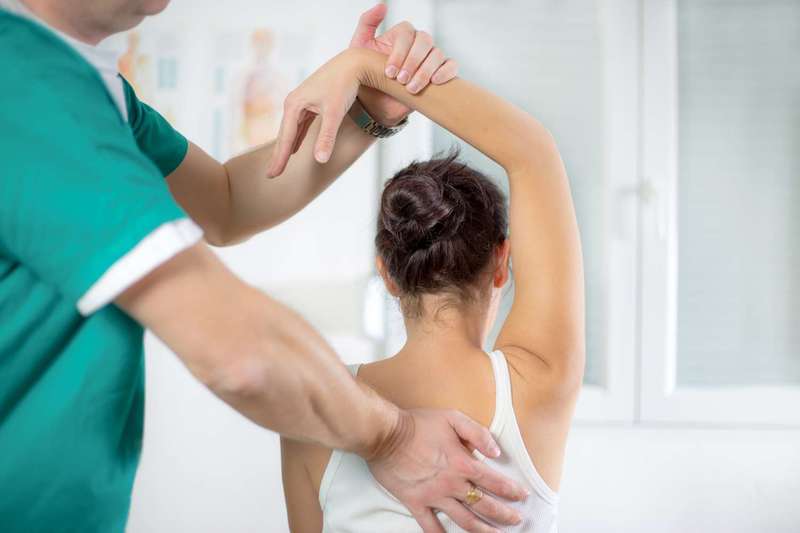
Measurement of Normal Shoulder Function: Providing the Data to Analyze Injured Shoulder Groups
The shoulder complex consists of four joints that move in concert to accomplish the largest range of motion of any joint complex in the human body. Previously, it was impossible to measure how these four joints move with the accuracy needed to influence clinical diagnosis, understanding, and treatment of injuries to these joints. Traditional methods of measuring shoulder motion in patients include palpation and attaching markers or sensors to the skin.
To understand how a healthy shoulder functions, 10 healthy subjects were recruited to perform four basic motions inside the dual-plane fluoroscopy system: raising the arm at the side and in front of the body as high as possible, as well as rotating the arm in and out as far as possible with the arm at the side and with the arm raised 90 degrees (as in throwing a ball). Measurement of these ranges of motion are important because these are common motions for activities of daily living, they represent common motions assessed clinically for shoulder pathology, and they are often used as the benchmark motions for the design of new surgical techniques and implants that must be reached to restore normal function. The images were analyzed and rotations and translations of the joints were described.
Our results indicate that during arm raises the humeral head shifts approximately 1.0mm upwards when raising the arm from the side until just above shoulder height and then drops back down. This new data provides an important benchmark for patients with shoulder instability and rotator cuff tears because they have increased shifts inside the shoulder that may need surgical intervention. Further studies with these patient populations will indicate how much translation is too much and when surgery is necessary.
An important other finding was that during the arm raise, the acromioclavicular (AC) joint that connects the collar bone (clavicle) with the shoulder blade (scapula) moves significantly more than previously thought. This has significant implications for the surgical treatments of AC dislocations, separations, and clavicular fractures, which remain controversial. Most surgical techniques do not allow for the measured amount of motion and, therefore, are more prone to failure due to excess stresses on the repair. Further investigation is necessary to determine the best surgical technique that restores normal AC joint motion.
Analysis is underway to address additional clinical questions and to assess averages and ranges for normal motion with which pathological conditions can be compared.

